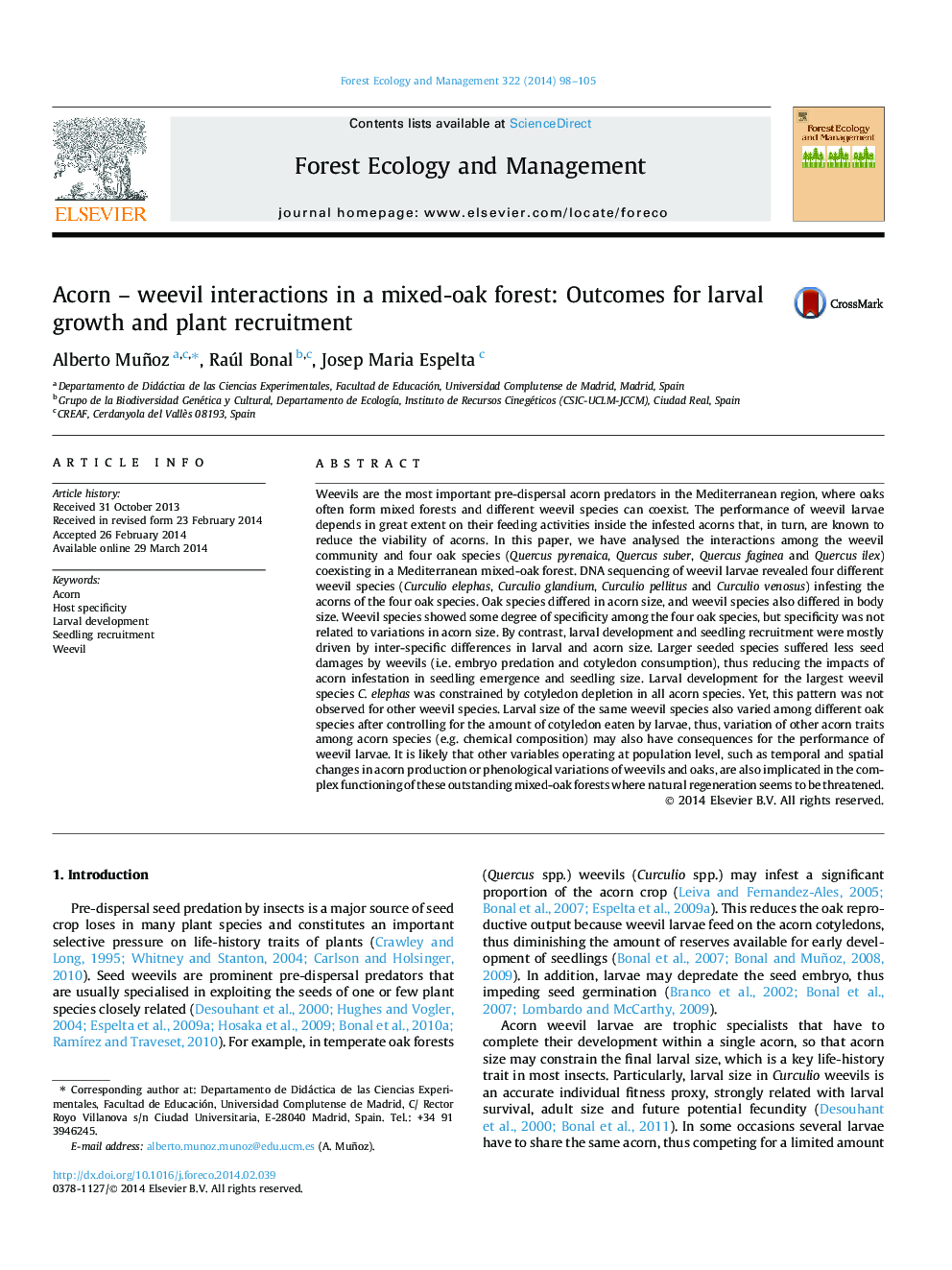| کد مقاله | کد نشریه | سال انتشار | مقاله انگلیسی | نسخه تمام متن |
|---|---|---|---|---|
| 86762 | 159210 | 2014 | 8 صفحه PDF | دانلود رایگان |
• Weevil species coexisting in a mixed oak forest show specificity among acorn species.
• Acorn size differed among oak species and larval size differed among weevil species.
• Acorn size drives the outcomes of the interaction for larvae and seedlings.
• Acorn size constrains larval growth just in the larger weevil species.
• Weevil specificity does not match the optimal predicted by acorn – weevil sizes.
Weevils are the most important pre-dispersal acorn predators in the Mediterranean region, where oaks often form mixed forests and different weevil species can coexist. The performance of weevil larvae depends in great extent on their feeding activities inside the infested acorns that, in turn, are known to reduce the viability of acorns. In this paper, we have analysed the interactions among the weevil community and four oak species (Quercus pyrenaica, Quercus suber, Quercus faginea and Quercus ilex) coexisting in a Mediterranean mixed-oak forest. DNA sequencing of weevil larvae revealed four different weevil species (Curculio elephas, Curculio glandium, Curculio pellitus and Curculio venosus) infesting the acorns of the four oak species. Oak species differed in acorn size, and weevil species also differed in body size. Weevil species showed some degree of specificity among the four oak species, but specificity was not related to variations in acorn size. By contrast, larval development and seedling recruitment were mostly driven by inter-specific differences in larval and acorn size. Larger seeded species suffered less seed damages by weevils (i.e. embryo predation and cotyledon consumption), thus reducing the impacts of acorn infestation in seedling emergence and seedling size. Larval development for the largest weevil species C. elephas was constrained by cotyledon depletion in all acorn species. Yet, this pattern was not observed for other weevil species. Larval size of the same weevil species also varied among different oak species after controlling for the amount of cotyledon eaten by larvae, thus, variation of other acorn traits among acorn species (e.g. chemical composition) may also have consequences for the performance of weevil larvae. It is likely that other variables operating at population level, such as temporal and spatial changes in acorn production or phenological variations of weevils and oaks, are also implicated in the complex functioning of these outstanding mixed-oak forests where natural regeneration seems to be threatened.
Journal: Forest Ecology and Management - Volume 322, 15 June 2014, Pages 98–105
